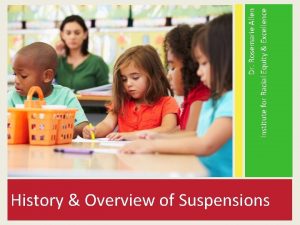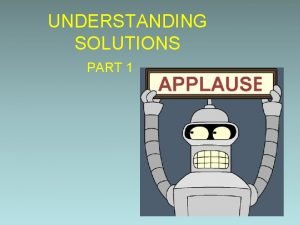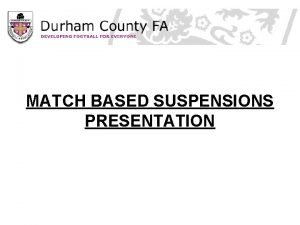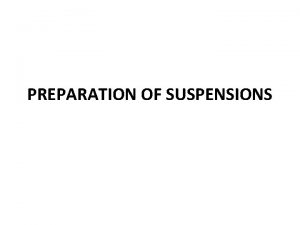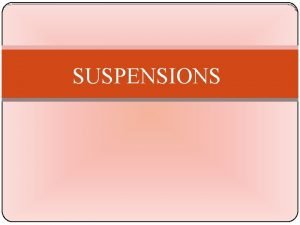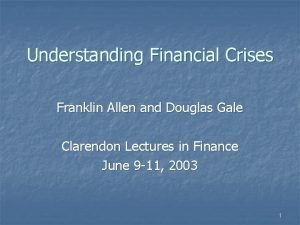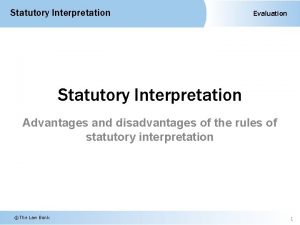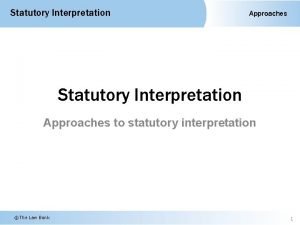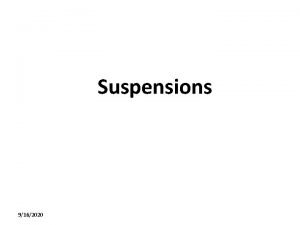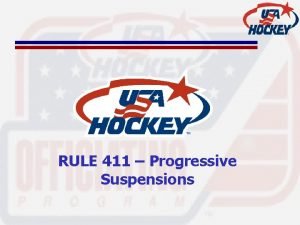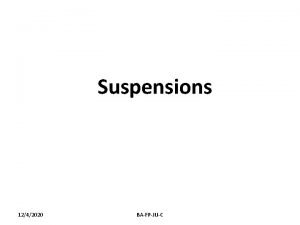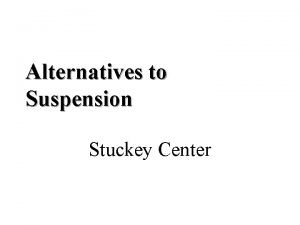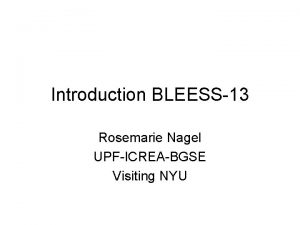History Overview of Suspensions Dr Rosemarie Allen Institute



























- Slides: 27

History & Overview of Suspensions Dr. Rosemarie Allen Institute for Racial Equity & Excellence

What is a suspension? • Excluding a child from the learning process for 1 or more days: • In school: student is excluded from the classroom • Out of School: student is excluded from being on the school premises • Student is sent home early • Student is not a “good fit” and asked to leave the school/program

Suspension: a “disciplinary action that is administered as a consequence of a student’s inappropriate behavior, requires that a student absent him/herself from the classroom or from the school for a specified period of time” (Morrison and Skiba, 2001, p. 174).

First suspension Study 1975 Children’s Defense Fund

Nearly 1 million children were suspended in the 1972 -1973 school year. Suspension rates for all students have doubled since the 1970 s. In 1973, the national suspension rate was 3. 7. In 2010 the suspension rate was 7. 4 percent (Losen & Gillespie, 2012).

� Studies spanning 40 years show that African American children are up to four times more likely to be suspended than White students (Bradshaw et al. , 2010; Children’s Defense Fund, 1975; Milner, 2013; Skiba et al. , 2011).

There has been extensive research suspensions and other disciplinary practices however; most studies focus on children in kindergarten through 12 th grades. Few studies have examined disciplinary practices for children younger than 5 years of age in early childhood programs.

The Civil Rights Data Collection (2014) included preschool data FOR THE 1 ST time. It included the number of preschool children who: : • had at least one out-ofschool suspension, • had more than one suspension, • was expelled, and • received corporal punishment.

The Data Showed: • 5, 000 preschoolers were suspended at least once and nearly 2, 500 were suspended a second time. • African American were 18 percent of the preschool population, but comprised 48% of suspensions • Boys were 79% of the preschool population but 82% of all suspensions. • Children with disabilities were also disproportionately (United States Department of Education, 2014). suspended

The New OCR (2016) Patterns of racial and gender disproportionality: • Boys represent 54% of the preschool population but 78% of those suspended. • African American preschoolers are 3. 6 times more likely to be suspended than their White peers.

African American girls are 20% of preschool female population but 54% of girls suspended from preschool

Children with disabilities are not disproportionately suspended from preschool BUT are disproportionately suspended from K 12

English Language Learners are not disproportionately suspended from preschool.

A survey conducted in Illinois reported that more than 40 percent of the State’s childcare programs had suspended infants and toddlers. Racial and gender demographics were not included in this study (Cutler & Gilkerson, 2002).

In North Dakota, 20% of ECE programs expelled children. Of those expelled, 53% were infants and toddlers and 31% were preschool children. (North Dakota State Data Center, 2008).

In 2005, a Yale University study discovered the expulsion rates of preschoolers, in public school programs were three times the rate of children expelled from kindergarten through twelfth grades combined (Gilliam, 2005)

A Colorado discipline study conducted in 2006, found that 10 children per 1, 000 were expelled from early childhood programs. (Hoover, Kubicek, Rosenburg & Zundel, 2012).

A 2009 survey of Boulder County, Colorado early care and education providers showed children of color comprised the largest group of expelled children, at 13 per 1, 000 (Greenberg & Ash, 2011).

The New Hampshire Child Care Expulsion Survey conducted in 2011 revealed 10 children per 115 were expelled, but did not include racial demographics (Kalinowski & Kalinowski, 2011).

In Michigan, the expulsion rate for preschoolers was 27 per 1000 students, That was 34 times the state’s kindergarten through 12 th grade rate. (Martin, Bosk & Bailey, n. d. ).

The United States Departments of Education and Health and Human Services (2015) recently released a joint statement on preschool suspensions and expulsions that recommends: (a) raise awareness about the negative impacts of suspension and expulsion, including the disproportionate number of children of color that are subjected to such exclusionary practices, (b) states develop policies that prevent exclusion as a disciplinary measure and to administer more appropriate policies that are without bias and discrimination and (c) use evidence-based approaches such as PBIS and Pyramid Model to prevent suspensions and expulsions in early childhood programs.

In 2014, Chicago Public Schools established a “no suspension” policy for children in preschool through second grade, in its revised Student Code of Conduct.

In Connecticut the Governor signed Public Act 2015 -96 prohibiting most outof-school suspensions and expulsions of young children in pre- K through second grade.

New York City prohibited the expulsion or suspension of children enrolled in four-year old Pre-K for All and Early Learn NYC programs, as well as the children age 0 -3 served through Early. Learn NYC.

“No Suspension” Policies: • Washington State • Minneapolis • California

The negative outcomes for students that have been suspended and expelled include: • disengagement from the educational system, • antisocial behaviors and, • risk for entering the juvenile justice system (Arcia, 2006). • Children who are suspended from school are 10 times more likely to enter the juvenile justice system (American Psychological Association Zero Tolerance Task Force, 2008; Gordon, Della, Piana, & Keleher, 2000).

What can we do in Colorado to address this issue?
 Rosemarie allen ted talk
Rosemarie allen ted talk Rosemarie allen
Rosemarie allen Goethe ein gleiches interpretation
Goethe ein gleiches interpretation Suspension solution
Suspension solution Durham fa suspensions
Durham fa suspensions Ingredients for suspensions
Ingredients for suspensions Evaluation parameters of suspension
Evaluation parameters of suspension Solutions, suspensions and colloids activity
Solutions, suspensions and colloids activity Molarity
Molarity Rosemarie parse theory of human becoming
Rosemarie parse theory of human becoming Rosemarie rizzo parse nursing theory
Rosemarie rizzo parse nursing theory Rosemarie magdalena albach-retty
Rosemarie magdalena albach-retty Rosemarie siggins
Rosemarie siggins Rosemarie ziedonis
Rosemarie ziedonis Burgerparticipatie openbare ruimte
Burgerparticipatie openbare ruimte Samuel lopez lawyer
Samuel lopez lawyer Karin allen
Karin allen Modified allen test
Modified allen test Allen and gale 2000
Allen and gale 2000 Allen's test
Allen's test Whitely v chappel 1868
Whitely v chappel 1868 Advantages and disadvantages of the literal rule
Advantages and disadvantages of the literal rule Adler v george golden rule
Adler v george golden rule Nicola allen knutsford
Nicola allen knutsford Burroughs allen waltrip
Burroughs allen waltrip Next in line effect psychology definition
Next in line effect psychology definition William b hartsfield accomplishments
William b hartsfield accomplishments Loretta trevis
Loretta trevis

